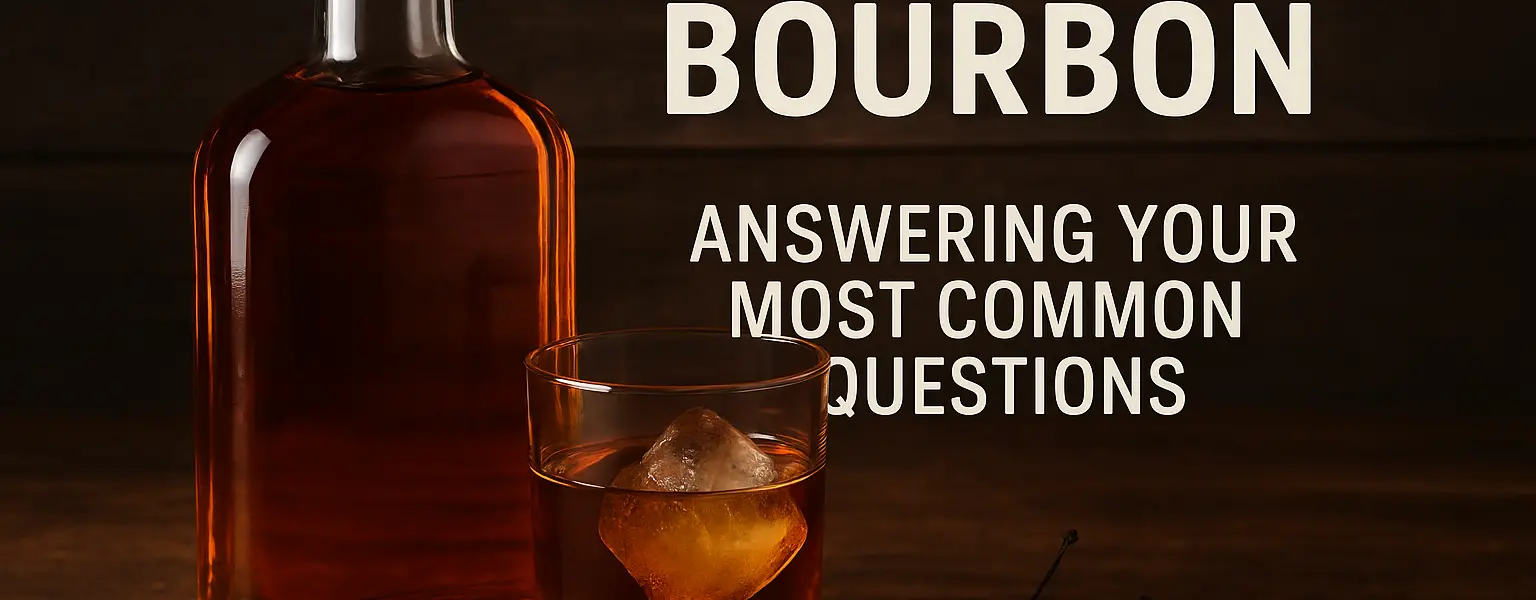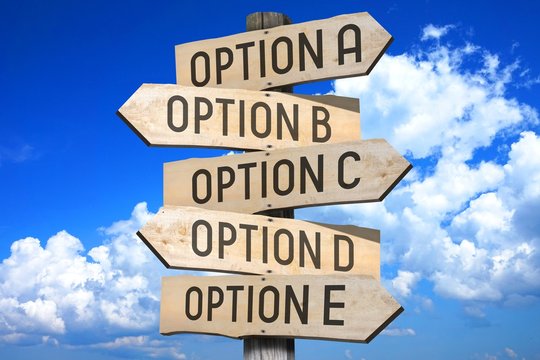
Exploring Bourbon: Answering Your Most Common Questions
Introduction
Bourbon has long been a symbol of craftsmanship, American culture, and tradition. Whether you’re a casual drinker or a seasoned connoisseur, the appeal of bourbon is undeniable. It’s a drink that has a storied history, a meticulous production process, and a taste profile that can cater to a variety of palates. However, it can also be a bit intimidating for those who are new to it. With so many varieties, brands, and nuances, where do you even begin?
In this post, we’ll dive deep into bourbon, answering some of the most frequently asked questions surrounding this beloved spirit. From its unique characteristics to how to taste it like a pro, we’re here to guide you through the rich world of bourbon. So, whether you’re just starting out or you’re already a bourbon aficionado, there’s something here for you.
What is Bourbon?
At its core, bourbon is a type of whiskey, but not just any whiskey—it’s a spirit with a unique identity and strict regulations that set it apart. In order to be classified as bourbon, it must meet a set of legal criteria defined by the U.S. government. These criteria not only protect the authenticity of bourbon but also help ensure the consistency of its production.
First and foremost, bourbon must be made in the United States. Though it’s most famously associated with Kentucky, bourbon can be produced anywhere in the country. A key component of bourbon is its grain mixture; it must contain at least 51% corn, with the remaining percentage made up of other grains like rye, wheat, and barley. The corn gives bourbon its distinctive sweetness, while the other grains bring complexity and spice.
The aging process is another essential element of bourbon. By law, it must be aged in new, charred oak barrels. The charring process caramelizes the sugars in the wood, creating those rich, dark flavors that are the hallmark of bourbon. What’s more, no additives or flavorings can be used, which ensures that the flavor of the bourbon comes entirely from the grain and the aging process.
Bourbon’s signature flavor profile includes notes of vanilla, caramel, oak, and sometimes even hints of spice or fruit. The aging process allows the spirit to soak in flavors from the wood and the environment, making each bourbon unique depending on where it’s made and how long it’s aged.
Bourbon vs. Whiskey: What’s the Difference?
Many people get confused between whiskey and bourbon, and understandably so—after all, bourbon is a type of whiskey. However, there are specific differences that make bourbon unique.
First, whiskey is a broad term that refers to any spirit made by distilling fermented grain mash. This mash can be made from various grains, including barley, corn, rye, and wheat. What differentiates the many types of whiskey, like bourbon, Scotch, and rye, are the ingredients used and the production process.
Bourbon, as mentioned earlier, must be made from at least 51% corn, and it must be aged in new charred oak barrels. Rye whiskey, on the other hand, must contain at least 51% rye in the mash, which gives it a spicier, more robust flavor. Scotch whisky (note the spelling) is made primarily from malted barley and is usually aged for longer periods in barrels that were previously used for other spirits, such as sherry. Scotch also has a distinct smoky flavor, often imparted from the peat used during the malting process.
Ultimately, while all bourbons are whiskey, not all whiskeys are bourbon. What sets bourbon apart is its American roots, its grain composition, and the fact that it is aged in new charred oak barrels.
History of Bourbon
The history of bourbon is as rich as the spirit itself. While its exact origins are debated, most historians agree that bourbon was first distilled in the late 1700s, likely by settlers in Kentucky. These early distillers used corn—an abundant and cheap crop—as the primary grain in their whiskey. This practice quickly gained popularity, and by the early 19th century, the production of bourbon was well underway.
While it’s commonly associated with Kentucky, bourbon didn’t always have its roots in this state. Early distillers in Pennsylvania and Maryland also produced bourbon, but it was Kentucky’s unique environment—especially its climate and the quality of the local water—that made it the ideal place for aging bourbon. The humid summers and cold winters allowed the whiskey to mature slowly, which brought out the complex flavors that make bourbon so unique.
The name “bourbon” itself is often linked to Bourbon County, Kentucky, though some believe it could also be a nod to the Bourbon dynasty in France. Regardless of the exact origin, what is clear is that bourbon quickly became popular in the United States and has since become a symbol of American craftsmanship.
Types of Bourbon
When it comes to bourbon, one of the great things is the variety. While all bourbons must meet certain legal requirements, there are different types of bourbon that each offer unique flavor profiles and characteristics. Here’s a breakdown of the main types:
- Straight Bourbon: This is the standard type of bourbon, aged for at least two years in new, charred oak barrels. If it’s aged for less than four years, the label must specify the age. Straight bourbons offer a pure, unaltered expression of the spirit.
- Blended Bourbon: Blended bourbons are a combination of straight bourbon and other spirits or flavoring agents. These bourbons are often more affordable and can be smoother or lighter in flavor. They’re perfect for mixing into cocktails or for those who prefer a milder drink.
- Single Barrel Bourbon: This type of bourbon comes from a single barrel, rather than being blended from several barrels. This means each bottle will have slightly different flavor profiles depending on the barrel it came from. Single barrel bourbons tend to be more complex and often come at a higher price point.
- Small Batch Bourbon: Small batch bourbons are made from a select few barrels, typically no more than 100. The idea behind small batch bourbon is that the distiller selects the best barrels for a richer, more nuanced flavor. These bourbons tend to be more refined and are often sought after by enthusiasts.
- Wheated Bourbon: Instead of rye, which is the common second grain in bourbon, wheated bourbons use wheat as their secondary grain. This results in a smoother, sweeter flavor that’s beloved by many bourbon drinkers.
Each type of bourbon offers something different, so it’s worth experimenting with several varieties to find your personal favorite.
Bourbon Production Process
The production of bourbon is a careful and intricate process that takes years to perfect. Each step contributes to the unique flavor profile of the final product. Here’s a closer look at the key stages in bourbon production:
- Mashing: The first step in making bourbon is mashing, where grains like corn, rye, barley, and wheat are ground down into a coarse mash. This mash is then heated to convert the starches in the grains into fermentable sugars.
- Fermentation: After mashing, the mash is cooled, and yeast is added to the mixture. The yeast ferments the sugars, turning them into alcohol. The result is a low-alcohol liquid known as “distiller’s beer,” which is then ready for distillation.
- Distillation: Distillation is where the magic happens. The fermented mash is heated in a still, and as it heats up, the alcohol vaporizes. The vapor is then condensed into a liquid known as “white dog,” which is the base spirit before aging. At this point, the bourbon is high-proof and harsh, but the aging process will smooth it out.
- Aging: Bourbon must be aged in new charred oak barrels, which gives the spirit its signature flavor profile. The interaction between the bourbon and the wood over time results in rich flavors like vanilla, caramel, and oak. The climate in which bourbon is aged—especially in Kentucky—also plays a role in the aging process, as the seasonal temperature changes cause the bourbon to expand and contract within the barrel, extracting more flavor.
- Bottling: After aging, the bourbon is filtered and bottled at the desired proof. Some bourbons are bottled at cask strength, meaning they are not diluted with water, while others are diluted to create a more approachable flavor.
Bourbon Tasting: How to Enjoy Bourbon
Bourbon is a spirit that rewards slow sipping and thoughtful tasting. To really appreciate its full complexity, here’s how to enjoy bourbon like a pro:
- The Appearance: The color of bourbon can tell you a lot about its age and flavor. A deeper amber color usually means the bourbon has been aged longer and has absorbed more flavors from the wood.
- The Nose: Take a gentle sniff of your bourbon. Bourbon’s aroma can be complex, with notes of vanilla, caramel, oak, and sometimes even a hint of spice or fruit. Take your time with the nose, as it can provide a lot of insight into the flavors you’ll taste.
- The Palate: When tasting bourbon, take a small sip and let it coat your mouth. Look for different flavor notes—sweet caramel, rich vanilla, spicy rye, or smoky oak. Pay attention to how the bourbon feels on your tongue. Is it smooth, or does it have a bite?
- The Finish: The finish refers to how the bourbon lingers on your palate after you swallow. A long, smooth finish often indicates a well-crafted, high-quality bourbon. Some bourbons have a spicier, more warming finish, while others are silky and mellow.
Bourbon Cocktails: Classic and Modern
While many bourbon enthusiasts enjoy sipping their favorite bourbon neat, bourbon is also the base for some iconic cocktails. Here are a few classic and modern bourbon cocktails that are sure to impress:
- Old Fashioned: This timeless cocktail is made with bourbon, bitters, sugar, and a twist of orange peel. It’s a simple, yet elegant, way to enjoy bourbon’s rich flavors.
- Mint Julep: A Kentucky Derby classic, the mint julep is a refreshing cocktail made with bourbon, fresh mint, sugar, and crushed ice. It’s a perfect drink for warm weather or any time you want something light and invigorating.
- Manhattan: Another bourbon classic, the Manhattan combines bourbon with sweet vermouth and bitters. Stirred with ice and garnished with a cherry, it’s a sophisticated and smooth cocktail that’s perfect for sipping.
- Whiskey Sour: This cocktail is made with bourbon, lemon juice, and simple syrup, shaken with ice and strained into a glass. It’s a balanced and refreshing drink that perfectly complements the warmth of bourbon.
Bourbon Collecting and Investing
Bourbon has become a hot commodity in recent years, and collecting bourbon has turned into both a hobby and an investment opportunity. Rare bottles, limited editions, and bottles from discontinued brands can fetch significant amounts of money on the secondary market. If you’re interested in collecting bourbon or investing in it, here are a few tips:
- Look for Limited Editions: Limited releases from famous distilleries, like Pappy Van Winkle or Buffalo Trace’s Antique Collection, are highly sought after and can be worth much more than their retail price. These bottles often appreciate in value over time.
- Check the Condition: If you’re collecting bourbon as an investment, it’s essential to keep your bottles in pristine condition. A bottle that’s sealed and in good condition will hold its value much better than one that’s been opened or damaged.
- Do Your Research: Knowledge is key when collecting bourbon. Familiarize yourself with the distilleries, the specific bottlings, and the provenance of the bottles you’re interested in. The more you know, the better your chances of making a good investment.
Bourbon Tourism: Visiting Distilleries
Kentucky is known as the bourbon capital of the world, but there are plenty of distilleries across the U.S. offering tours, tastings, and unique experiences. If you’re a bourbon lover, taking a distillery tour is an unforgettable experience. Some of the top distilleries you should consider visiting include:
- Maker’s Mark: This iconic distillery offers a fascinating tour and allows you to dip your own bottle in wax as a keepsake. The stunning grounds and rich history make it a must-see.
- Buffalo Trace: One of the oldest distilleries in the country, Buffalo Trace offers a variety of tours and tastings. They’re known for producing some of the most highly regarded bourbons on the market.
- Woodford Reserve: Located in Versailles, Kentucky, Woodford Reserve offers an immersive experience that dives into the artistry of bourbon-making. Their tours take you through the entire process, from grain to glass.
- Jim Beam: If you’re looking for a more family-friendly distillery experience, Jim Beam offers an engaging tour that highlights their rich history and their process for crafting bourbon.
Bourbon Myths and Misconceptions
Like many popular drinks, bourbon is surrounded by myths and misconceptions. Let’s take a look at some of the most common ones and clear them up:
- Older Is Always Better: It’s easy to assume that older bourbon is always better, but that’s not necessarily the case. While aging does affect the flavor, there are plenty of younger bourbons that are just as flavorful as their older counterparts.
- Bourbon Can Only Be Made in Kentucky: While Kentucky is undoubtedly the heart of bourbon production, bourbon can be made anywhere in the U.S., as long as it meets the legal criteria. Many distilleries outside Kentucky produce excellent bourbons.
- Bourbon Must Be Drunk Neat: While sipping bourbon neat is a popular choice, there’s no wrong way to drink it. Whether you prefer it with a splash of water, on the rocks, or in a cocktail, it’s all about what you enjoy.
Bourbon Culture: Events and Festivals
Bourbon isn’t just a drink—it’s a culture. From tastings to festivals, the bourbon community is vibrant and welcoming. Some of the top events include:
- The Kentucky Bourbon Festival: Held annually in Bardstown, Kentucky, this festival celebrates all things bourbon, offering tastings, workshops, and the chance to meet some of the best distillers in the industry.
- Bourbon & Beyond: This festival combines bourbon tastings with music, making it a unique and fun way to experience bourbon culture. It’s held annually in Louisville, Kentucky.
- WhiskeyFest: A nationwide festival that allows bourbon lovers to sample hundreds of different whiskeys, including rare and hard-to-find bottles.
Bourbon and Food Pairing
Bourbon is a versatile spirit that pairs beautifully with a wide range of foods. Here are some pairing suggestions that will elevate your bourbon experience:
- Bourbon and BBQ: The smoky, rich flavors of bourbon complement barbecue perfectly. Whether you’re enjoying ribs, pulled pork, or brisket, the deep, sweet notes of bourbon enhance the savory flavors of BBQ.
- Bourbon and Chocolate: Dark chocolate and bourbon are a match made in heaven. The sweet, rich flavors of bourbon pair wonderfully with the bitterness of dark chocolate, creating a luxurious dessert experience.
- Bourbon and Cheese: A sharp cheddar or creamy brie can enhance the complex flavors of bourbon. For a unique pairing, try pairing a spicy rye bourbon with a tangy blue cheese.
Conclusion
Bourbon is more than just a drink; it’s a celebration of American craftsmanship, history, and tradition. Whether you enjoy sipping it straight, mixing it into a cocktail, or pairing it with food, bourbon offers a sensory experience that’s both rich and rewarding. We hope this guide has answered your most common bourbon questions and inspired you to explore even more about this remarkable spirit.
Feel free to share your own bourbon experiences in the comments below, and raise a glass to the world of bourbon!



